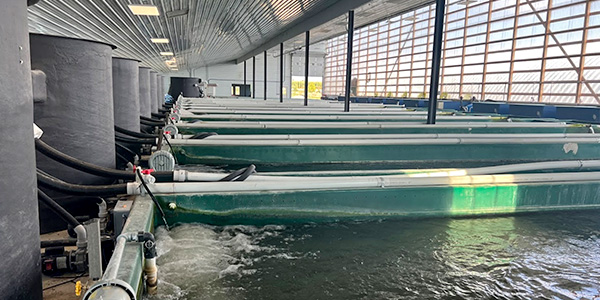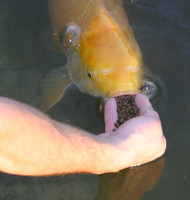Understanding Kigoi and Akame Kigoi
Posted by Ellen Kloubec on 16th Apr 2014
The Kigoi are often overlooked. They can be easily over-shadowed by the flashy or sparkly varieties of Koi. But once you learn to understand the Kigoi you might just become infatuated with its scrumptious yellow-ness.
The Kigoi variety is a yellow, single colored, non-metallic koi that belongs in the Kawarigoi class. You may remember that the Kawarigoi is a catch-all class for any non-metallic koi which are not benched into the other koi classification groups. Kigoi will compete against varieties such as Chagoi, Benigoi and Ochiba-Shigure. Non-metallic refers to the fish’s skin, not its scales. The skin of Kigoi should be a bright yellow color that is a consistent hue from nose to tail. It should be free of imperfections or pigment blotches. When a Kigoi is blessed with sparkling diamond scales it is called Gin Rin Kigoi. When a Kigoi has pink or red eyes it is called Akame Kigoi. This type is very rare. Kloubec Koi Farm may be the only breeder of Akame Kigoi outside of Japan.
Kigoi are often light colored and bland as a juvenile, but grow into a bright and gorgeous specimen within a few years. Kigoi have a very friendly way about them, similar to the Chagoi. They can be just as friendly and will easily train to hand-feed. Their endearing and social nature, and a never ending eagerness to consume all sorts of food, contributes to their tendency to grow quite robust.
When evaluating a Kigoi to add to your koi collection look for a fish that has consistent coloring. Try to steer away from any Kigoi that has an orange-ish tint. Look for a pair of red eyes if you want the Akame type. Some may have only one red eye. Choose a fish that has a broad shoulder area, as this is indicative of a fish that will grow to a large size. Don’t forget to evaluate the deportment, or the way it swims through the water, too.
I’m often asked how to tell the difference between a Kigoi and a Yamabuki Ogon, or how to identify one variety from the other. The easiest way for me to describe the difference in the two yellow koi is this; just look at the skin . A Yamabuki will have glistening yellow iridescent skin. A Kigoi will have matte yellow skin, similar to a Brach’s butterscotch candy. It may still be shiny, but lack the iridescent luster.
When you visit the Kloubec Koi Farm you can meet our very friendly Koi mascot, The Yellow Sub. She is a large Kigoi who is usually the first koi to come scooting over pond-side to greet visitors, and take food from their hands. She likes being hand-fed and petted. She likes to suck on toes and gives big sloppy Koi kisses. Our Yellow Sub is so friendly that you’re sure to fall in love with the Kigoi variety.


